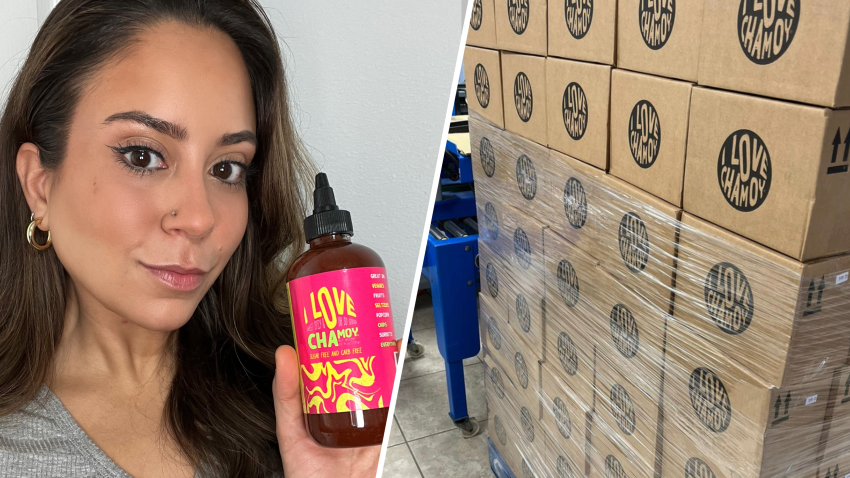This article is part of Bísness School, a series that highlights one of the fastest-growing groups of entrepreneurs in the United States, Latinos. You can hear or watch the full conversation with Annie Leal below.
One of Mexico’s most versatile sweet sauces is chamoy — a blend of dehydrated fruit, chili powder, salt, sugar and citrus.
Chamoy is so popular among the Mexican community that when Mexican entrepreneur Annie Leal couldn’t find a sugar-free version of it in her father’s sugar-free candy drawer, she was stunned.
“I'm looking through all of the little bags of sugar-free candy. He had sugar-free Hersheys, sugar-free Reese’s, Jolly Ranchers. Every American candy had a sugar-free version, and I didn't see any Mexican candy. And I was like, ‘That is extremely weird.’”
Leal’s family moved to the United States when Annie was in college. The family left Monterrey, Mexico, for McAllen, Texas, after increased violence and organized crime hit close to home.
“Unfortunately, one of my cousins was kidnapped by the narcos and he was held ransom for 12 days. Thankfully, he was rescued by the Mexican military,” Leal said. “My dad called my mom and was like, ‘Grab the girls and come to the U.S. immediately,’ which was like 2 hours away. So we packed everything in one night: a couple of shirts, laptops, books, and we left.”
Leal's father was diagnosed with diabetes shortly after the move.

“When my dad gets diagnosed, he completely changes his lifestyle,” Leal said. “He's incredibly disciplined... He was able to control his diabetes, but I didn’t pay attention very much to all of his lifestyle changes.”
Get a weekly recap of the latest San Francisco Bay Area housing news. Sign up for NBC Bay Area’s Housing Deconstructed newsletter.
U.S. & World
One of those changes was the consumption of the famous sauce, which on average includes 1.2 grams of sugar per tablespoon, according to Nutritionix.
Leal was determined to revolutionize the chamoy market in the U.S., using her background in marketing and content creation for digital-first brands like Mitú, which produces content for the U.S. Latino community.
“I wanted to make this for my dad, but I’m like, ‘He can’t be the only person struggling with this.’ […] I knew how Mexican culture was just exploding and exploding. People loved it. They loved our music and our food. They’re starting to love our candy.”

Annie Leal spoke to NBC's Bísness School about how she launched her product I Love Chamoy and what were the steps to finding the perfect formula. Her answers have been edited for length and clarity.
Bísness School: What was your next step after you got the idea for I Love Chamoy?
Annie Leal: I didn't have any idea what the next step should be. I told my parents this idea. Surprisingly, they [were] not like, “That's a bad idea.” I went to the store, and I bought notebooks, sketchbooks, pencils, you know, like [you do] the first day of school because I didn't know where to start. I get the notebooks and I just start drafting. I started with the marketing stuff first. That's what I knew.
BS: How easy or hard is it to build your first formula? How long did it take?
AL: It took a long time. We tested many different sugar-free sweeteners. You have Splenda, Stevia, monk fruit. How do you make something carb-free and sugar-free this day and age? [How do you] make sure that it doesn't spoil, that it can be shelf-stable. So it was just a long process. We tested over 40 different formulas. Around month three, I was getting exhausted, and I was seeing my bank account. [I thought,] “This is terrifying.” It took us about six months to get the final formula.

BS: So then you have your product. What’s next, are you ready to sell?
AL: I wanted to make 500 [units] and then somebody convinced me to make 750. The goal was to sell them in a span of six months. The day our product was ready, I posted a video on TikTok. The video goes viral. We sold those 750 bottles in six days instead of six months. It was so rewarding.
Watch the full conversation with Annie Leal to learn what she did after losing $10,000 worth of product and why she said no to appearing on “Shark Tank Mexico.”




